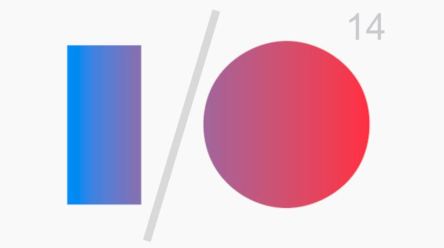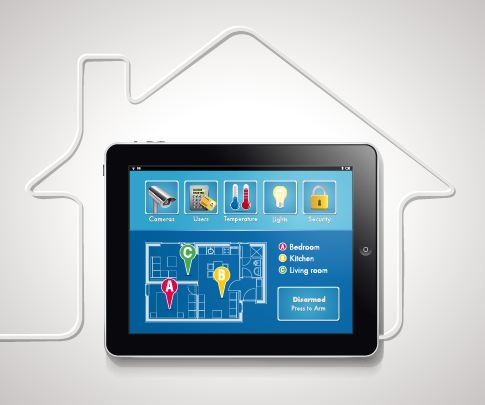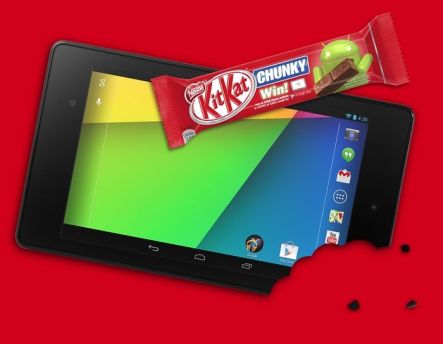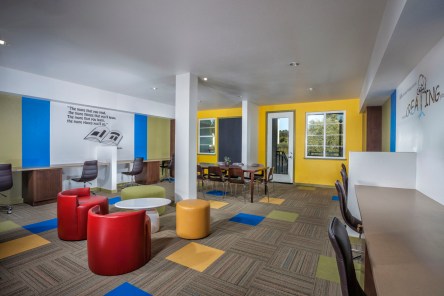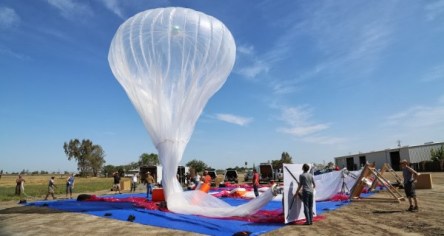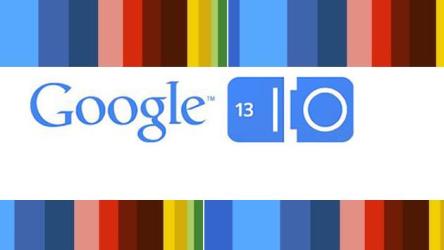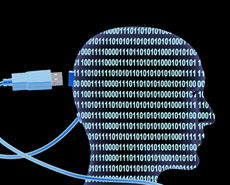A wave of announcements flooded Google’s I/O conference this year. The almost three hour keynote included anticipated news, as well as surprises. Gone are the days when technology companies can focus solely on their own products when presenting them. Whenever Google or Apple introduce a new feature, it is instantly compared with the competing counterpart, and the alternative will likely be mentioned with more or less subtlety. Points of comparison are hard to in down as both giants’ mobile platforms seem to resemble one another more and more, in both functionality and purpose: Apple has Continuity between OS X and iOS, and now Google introduced synced notifications between Chrome OS and Android. Apple announced HealthKit and Google presented Google Fit – the mission of both appears to be the development of seamless ecosystems of hardware, software and services that keeps users faithful to one or the other. Here are some highlights from Google’s conference in San Francisco. Android L is the successor to Android Kit-Kat; it was presented as the biggest upgrades ever done to Android. The most noticeable ones are the design changes – the sleek Holo theme of KitKat is being replaced with the colorful new Material Design, a new design language which is based on basic shapes and sheets of paper. Material Design gives developers the ability to add the illusion of depth, featuring a grid-based layout so that it can be easily ported to different screen sizes. L has been deeply integrated with Android Wear platform, fact that allows users unlock their smartphones without a pin code if they are wearing a smartwatch. Notifications received a makeover too, allowing users to respond to notifications directly from the lock screen. Mobile Chrome will take advantage of the Material Design as it...
The Connected Home
Internet of Things
We’ve started getting a closer look at what everyone calls the “Connected Home”. The most popular connected home device is currently the security system, according to Forrester. There are also electronic door locks – electronic keys with expiration date (that can be used with maintenance technicians) that send an alert when someone is attempting to enter – garage door openers, weather stations for vacation homes, and cameras like Dropcam for baby or pet monitoring. We already have the fridge that sends text messages when the milk is running low and we have the smart egg tray that tells your smartphone how many eggs you’ve got at home and when they’re going bad. We also have the Hue lightbulbs made by Philips that are controllable through the iPhone – set custom lighting, turn light on or off remotely and set lights to slowly brighten in the morning. Through a smartphone the Withings scale and the Bose music system are perfectly controllable as well. At the recent CES show in Las Vegas, companies displayed their latest smart appliances, and looked around for suitable collaborators. These partners will together create a real George and Jane Jetson home. Google aimed high and acquired Nest Labs for $3.2 billion. With this move the giant ensured a premium position in the yet young ecosystem which, in a not too far future, will become a core industry that will affect all aspects of life. Nest Labs is a popular name only in select groups and markets – in the U.S., Canada and the UK – where their products are merchandized. In 2011 they released the internet-connected thermostat that learns to cool or heat homes in accordance with its inhabitants. Two years later they came up with the smoke and carbon-monoxide detector...
Nexus 5 on Kitkat Diet...
Sweet enough?
The Nexus line offered by Google has created a clear identity; behind each version stands the will to make the best, purest, Android-istic phone, at a price that matches what most carriers and manufacturers would charge with a regular two-year contract. On Halloween Google launched Nexus 5 after months of “accidental” leaks, powered by Android 4.4 Kitkat software. The Nexus line represents Google hardware running on Google software, built by a manufacturing partner (LG), but with Google’s involvement in the creation of the hardware. The result is a 5-inch phone, thinner and lighter than the previous version, quite difficult to use for those with small hands. It’s coated in a soft-touch plastic (not the best choice for a premium phone), with a silky texture that provides just enough friction to keep the phone in hand. The backside has a rounded finish that feels nicely in the palm of the hand and the 130g it weights makes it light enough for a one-hand usage. The rear camera in the top left-hand corner looks and feels odd, bulging the surface and acting as prop when the phone is laid down flat, basically left completely unprotected. The screen is full HD IPS Plus LCD that makes text on websites crisp and easily readable, while photos and videos offer details and intense color. Furthermore, the screen’s brightness makes reading in direct light much easier. The technical specifications feature a 2.3 GHz quad-core Qualcomm Snapdragon 800 processor backed by 2GB of RAM, 16 or 32 GB of storage (no micro SD slot for expansion), 8MP rear camera with OIS (optical image stabilization) and a 1.3MP front camera. The HDR (high dynamic range) function helps produce greatly improved detail and color in photos. Based on these, the phone is as...
Google Invests
In affordable housing
Franklin Street Family Apartments, a new affordable community in Mountain View, Calif., has a tech-savvy benefactor. The $23.4 million multifamily community, which was developed by ROEM Corp., received $6.5 million in equity from Google. The tech giant also provided a grant to provide computers and free Internet access to residents. “Our investment in Franklin Street Family Apartments is helping to create 51 new affordable housing units for families,” Kojo Ako-Asare, head of Google’s corporate finance team, says. “Mountain View has been a wonderful home to Google, so we couldn’t be more thrilled to help others make this community their home as well.” Franklin Street Family Apartments includes one-, two- and three-bedroom floor plans. There are 92 parking spaces available for residents, but the community is also located in close proximity to public transportation, making the apartments eco-conscious. Other green elements include photovoltaic panes, water and energy-efficient appliances and transit passes for residents. “Google remains committed to supporting affordable housing options in areas that allow for use of alternative transportation,” Ako-Asare says. Though the community just recently celebrated its grand opening, Franklin Street Family Apartments is already 100 percent occupied. Read more about Franklin Street Family Apartments here. Jessica Fiur is News Editor at Multi-Housing News. Find more of her insights on multifamily living on the “What Renters Want”...
Connecting from Afar
Internet Goes Remote via Balloon
As a Peace Corps volunteer serving in rural Paraguay, I encountered moments when a quick internet search would have been a blessing. The resource could help with verb conjunction as I fumbled through Spanish or event planning during the rainy season. I shrugged off the inconvenience as part of the job. Away from the city, internet connectivity simply wasn’t an option. Now, an exciting new project delivers life-altering internet connectivity for isolated communities. Google’s recent launch of super pressure balloons, dubbed Project Loon, has drawn attention to the emergence of balloon-based internet connectivity. Space Data and World Surveillance Group have launched similar projects, mainly for military purposes. Google is the first to use the technology to bring 3G speeds to remote areas for civilian use. The company is also the first to attempt long-term operations using the balloons, currently up to 100 days. If it works out, here are the kinds of problems that Project Loon could solve: Back in 2010, my Paraguayan students were in a frenzy over the FIFA World Cup. I jumped on the opportunity to turn their fanaticism into a learning experience. We began a geography series highlighting dominant teams like Spain, Brazil, Uruguay, and the Netherlands. As I began the class session on Japan, I remembered a college friend who was teaching in Tokyo at the time. I thought: How awesome would it be to have our students interact with each other in real time. They could see one another’s faces and take a little tour of each other’s worlds. In my rural station, access to basic necessities was scarce. Forget smartphones and data plans. The infrastructure simply was not available. Google’s balloon-based connectivity could change that. On a larger scale, balloon-based connections permit nonprofits, hospitals, and businesses in developing regions...
Google I/O
Conference Highlights
The annual Google conference ended a few days ago. This year the event was more developer-centric. Many were disappointed by the lack of new gadgets, but this year’s conference focused on behind-the-scenes action. News about Android, Google Chrome, Google Maps, Google Search, and Google Play took center stage. Android By now, 900 million activations of Android devices have occurred, and more than 48 billion apps installed from the Google Play store. Developers read these numbers as serious interest from the customer side. To aid development efforts, Google introduced a new tool – Android Studio – which allows them to work in multiple languages and for different sizes much easier than ever. Google Chrome Google named it “the most popular browser used in the world” and the 750 million active users worldwide agree. Last year, there were 450 million active users, much of the growth having happened on tablets and phones. And because it is a platform itself, developers use it to build apps, using all open tools offered by Chrome. More news on the operating system will be announced later this year. Google Maps for Mobile For the past ten years, the Google Maps product has been unmatched. Now, changes are making it more user-friendly and will help us discover new places, instead of just taking you from point A to point B. Maps users now have Places Recommendations, meaning that they see what places have been rated and recommended by Google+ friends. The integration with Zagat has been improved to include badges and editorial reviews right in the app. Exclusive offers from different locations can now be displayed directly in the information cards, redeemable on the spot or saved within the app for later use. Google Explore is the new feature that enables...
High Speed Chase
Austin fiber showdown
Austin, Texas is already famous. It is home to the major multimedia festival South by Southwest, a great music and arts scene, and fabulous queso. And now that Google and AT&T have decided to go head-to-head to deliver Austin super-duper fast Internet connectivity, it might be time to change the slogan “Keep Austin Weird” to “Keep Austin Wired.” This week, AT&T announced that Austin will be the next city to benefit from the wonders of Google Fiber, which offers online access at speeds 100 times faster than what most of us are used to. How fast is one gigabit per second? Fast enough that you could download a 2GB file in a few seconds, rather than a few hours. Kansas City was the first market to feel the magic. Fiber was rolled out there in late 2012, prompting the growth of new businesses, much media attention, and happy/lucky Internet users. Google’s statement on why Austin was chosen for Fiber: “It’s a mecca for creativity and entrepreneurialism, with thriving artistic and tech communities, as well as the University of Texas and its new medical research hospital,” said Milo Medin, VP of access services for Google Fiber, on Google’s blog. “We’re sure these folks will do amazing things with gigabit access, and we feel very privileged to have been welcomed to their community.” Google plans to be live with Fiber in Austin by summer 2014. The very same day Austin’s selection as the next Fiber city was announced; AT&T announced it would bring its Project VIP effort to Austin, too. Project VIP is a broadband expansion effort, supported by advanced fiber optic infrastructure, that also promises speeds of 1 GBPS. The nationwide effort entails AT&T spending $14 billion over the next three years to enhance its...
Google’s New Privacy Policy...
What it means for you
If you have any Google services (and who among us does not?) then you probably received multiple notices that on March 1 Google implemented a new privacy policy designed to replace a hodgepodge of 60+ old privacy policies, spread across an array of their services. Google gives their take on it here. The bottom line is, Google keeps and uses a lot of your personal online data: search queries, browsing habits, contacts, emails, and more. If you are interested in minimizing (or completely eliminating) the data that Google keeps, you have options available. Managing your accounts Want to get a handle on your account(s) and maximize your privacy options? Here are some suggestions to help keep sharing to a minimum: Log in to your Google dashboard to get an overview of your Google accounts & services. Explore a little and clear services & data you do not want under your account. Clear your web history – this will erase all items from your web history and stop your web history from being recorded in the future. From your web history page, just click “Remove all Web History.” Opt out of personalized ads. These are generated based upon your search queries or content in Gmail messages. To disable, simply go to your ads preferences page and click “Opt out.” Download your data. Google Takeout allows you to download a copy of all your data stored in Google products. This gives you a bird’s eye view that can help you pick and choose what to keep and what to eliminate. Note: not all products are currently supported. All of these options include varying levels of customization for partial elimination of data sharing: clear only parts of your web history, block only certain advertisers, etc. Taking your...

